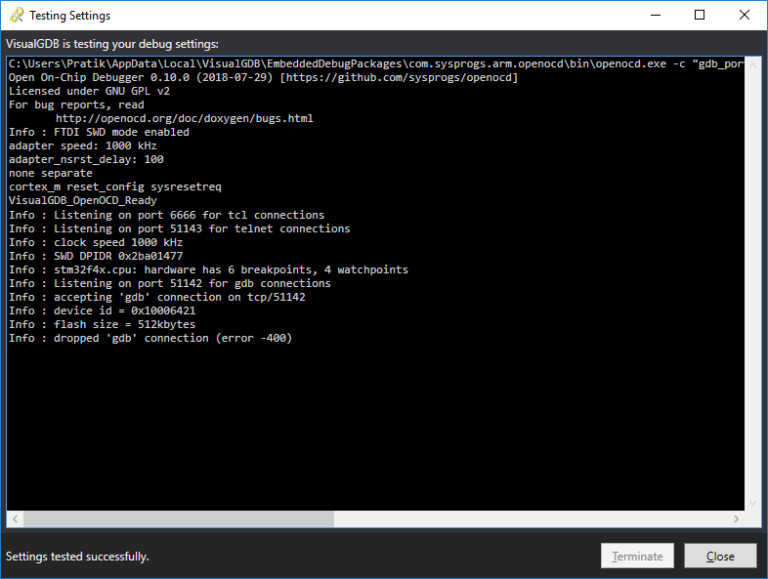|
- Dual Rs232-hs Driver Downloads
- Dual Rs232-hs Driver Download
- Dual Rs232-hs Driver
- Dual Rs232-hs Driver Windows 10
- Dual Rs232-hs Driver Windows 10 Download
Dual Rs232-hs Driver Downloads
Problem
Both the HiFive1 and the Arty boards use FTDI to access the JTAG interface.
Support for WinCE. FTDI drivers are available for Windows CE 4.2-5.2, 6.0/7.0 and 2013. Support for older versions of Windows Desktop. NOTE: Microsoft have ended support for certifying XP and VISTA through their WHCK test program. Next-rs232 2p 드라이버입니다. 아래의 버튼을 클릭하시면 next-rs232 2p의 드라이버를 받아 보실 수 있습니다. The software driver is properly installed, but the USB-RS232 adaptor does not work as expected One of the common reasons that software may not work as expected with a USB-Serial adaptor when the devcie is properly installed, is many older programs (and even some new ones) only support a limited number of COM ports (e.g. Only COM1 - COM4).
Select the appropriate drivers and click on Next. Follow the on-screen instructions to complete the process. Please reply with the status of the issue, we will be glad to help you further. Regards, Nikhar Khare. Microsoft Community - Moderator. This is a convenient dual port USB to serial adapter; it features two high-speed serial RS232 ports which, once the drivers are installed, both will show up in your operating system's Device Manager as a two virtual COM ports each with its own COM port number, which can be used as if they were actual built-in COM ports.


By default, the standard FTDI drivers available on Windows and macOS assume the FTDI chip is used to connect UART ports via USB.
The FTDI chip can be reconfigured to access the JTAG interface via direct drivers, but this requires the presence of a small EEPROM to store the configuration, and neither board has this EEPROM physically installed.
On the HiFive1 board the problem is complicated by the fact that the second FTDI interface is used to forward the trace stream and must remain a virtual UART.
Except on GNU/Linux, where direct access to USB devices is native, for Windows and macOS there is no elegant solution to this problem, but only some work-arounds.
Windows
Windows allows a port to be acceed via the user-space WinUSB driver only after explicitly reconfiguring a specific interface for direct drivers.
This requires installing a special driver, specifically configured for a given VID:PID.
One possible solution is libusbk, which also comes with a tool to generate these drivers. As with usual drivers, this generated driver can be installed and uninstalled, if no longer needed.
An older workaround used a tool called Zadig, but this tool had the major disadvantage that changes were permanent, and it was not possible to return the FTDI device to the default UART.
TODO: provide the driver binaries.
macOS
When dealing with USB drivers, Apple is even stricter; if the USB device has any of the FTDI VID:PID pairs, macOS assumes it should be associated with a virtual UART device, and there is no simple way to reconfigure this.
To view the attached USB devices on macOS, use system_profiler. For example, the HiFive1 board is seen as Dual RS232-HS, PID:VID 6010:0403:
If you already use FTDI based USB/UART adapters, remember the Product ID, since you need to manually enable it in a later step.
Dual Rs232-hs Driver Download
By default, macOS identifies the board as a Dual RS232-HS device, and offers to configure it as a network interface. Since the HiFive1 board does not have an EEPROM to store an unique ID, the devices are named using a string containing the address in the HUB hierarchy, so the a13 letters in the name are different when connecting the board to a different USB port.
Attempts to open the trace port (the second UART) are ok:
Use Ctrl-A Ctrl-K to kill the session, or Ctrl-A Ctrl-D to detach and screen -r to reconnect.
Attempts to open the HiFive1 board with OpenOCD fail with:
Dual Rs232-hs Driver
The workaround it to disable all personalities of the AppleUSBFTDI kernel:
This command will remove the UART associations for all FTDI based devices. All devices will be available for user space drivers, like libusb.
In the HiFive1 case, the first interface should no longer be available as a tty device, but as JTAG, and OpenOCD should be able to connect to the JTAG interface:
This next command will redo the UART association only for the given personality, in this case the second interface of PID 0x6010 (AppleUSBEFTDI-6010-1).
The second interface should be available again to screen, as before.
If you have other FTDI devices that you need to remain associated to UART, issue similar commands, for each one.
The AppleUSBFTDI module has many personalities; to bring them back, start kextutil in interractive mode, or reboot:


Use case
I personaly have two USB/UART DB-9 adapters and the RISC-V HiFive1 and Arty boards.
To make them work, I use a file
that I start with:
GNU/Linux
GNU/Linux systems do not need suplimentary drivers to access the FTDI devices, but only some configuration tweaks.
Dual Rs232-hs Driver Windows 10
TODO: explain how to use openocd rules file.
Dual Rs232-hs Driver Windows 10 Download
Last modified on Mon Jun 4 19:50:15 2018 UTC.